Blog
Understanding your Child’s Sensory Development
I was recently asked the question “Should I concerned about my child’s sensory development?” The answer is YES! Children are oriented toward sensory experiences. Children experience the world by tasting, touching, smelling, seeing and hearing. Stimulating the senses sends signals to a child’s brain that helps to strengthen the neural pathways.
What is sensory development?
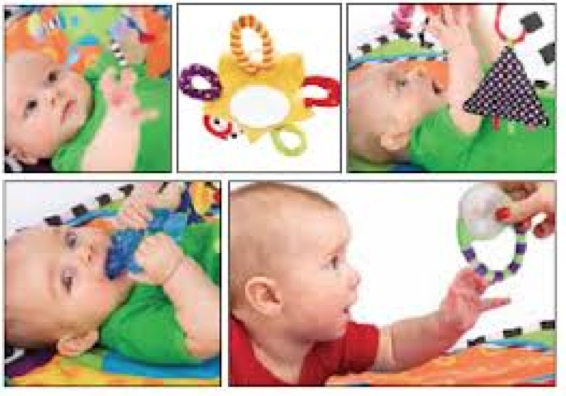 It is the journey that your baby will take in exploring the world through their senses. Most babies are born with their senses fully developed. As a child approaches 3 years of age subtle changes occur. Understanding typical development is important as any problems with one system could affect your child’s development. Your baby is unique and may acquire certain skills at a slower or more rapid pace. Routine checkups by your child’s doctor or pediatrician is recommend for further evaluation of sensory development.
It is the journey that your baby will take in exploring the world through their senses. Most babies are born with their senses fully developed. As a child approaches 3 years of age subtle changes occur. Understanding typical development is important as any problems with one system could affect your child’s development. Your baby is unique and may acquire certain skills at a slower or more rapid pace. Routine checkups by your child’s doctor or pediatrician is recommend for further evaluation of sensory development.
TASTE/SMELL
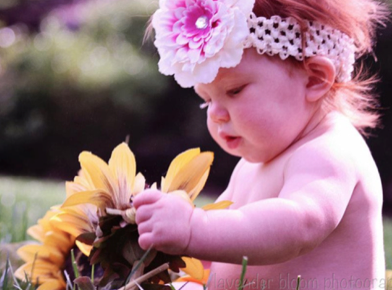 Infants have more taste buds for sweets than adults. A babies’ flavor progression starts with sweet, followed by salty, sour, and acquires bitter last. They will have full sensitivity to their taste between 12 to 19 months. Toddlers will enjoy smashing, licking, and playing with new foods. Separate tastes and textures in the beginning of feeding. Use visual appeal and let your babies explore their new foods! Your baby will have use of smell from birth. They enjoy pleasant odors and may turn head away from unpleasant smells.
Infants have more taste buds for sweets than adults. A babies’ flavor progression starts with sweet, followed by salty, sour, and acquires bitter last. They will have full sensitivity to their taste between 12 to 19 months. Toddlers will enjoy smashing, licking, and playing with new foods. Separate tastes and textures in the beginning of feeding. Use visual appeal and let your babies explore their new foods! Your baby will have use of smell from birth. They enjoy pleasant odors and may turn head away from unpleasant smells.
HEARING/LISTENING
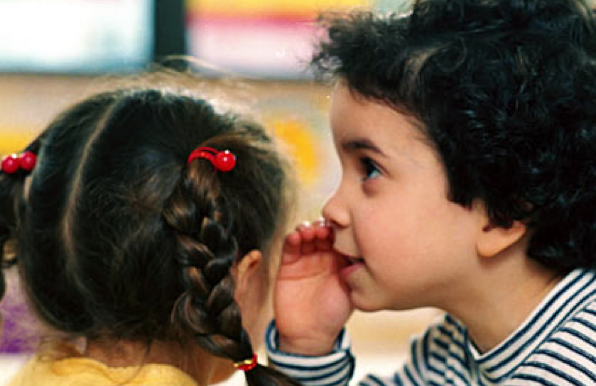
While babies begin to hear at 16 weeks gestational hearing is not fully developed and the middle ear is filled with fluid at birth. Babies respond best to high pitched sounds or voices at birth. Because they learn to hear in the womb they are able to distinguish their mothers voice at birth. While your baby will be able to localize sounds at birth it is not until three months of age however, your baby will turn his or her head towards the sound location. When your baby is between four to six months of age an infant will recognize familiar voices and will respond in vocal play with others. They will respond to background music or music from toys. By seven months to one year of age your baby will listen, demonstrating an understanding of simple words often responding to requests by facial gestures or babbling. As speech continues to develop through listening, between one to two years of age your child should respond to stories and directions using words, eye contact and gestures. By age three to four years old your child should show response to auditory stimuli from a different room and will be able to answer who, what, when where questions.
TOUCH
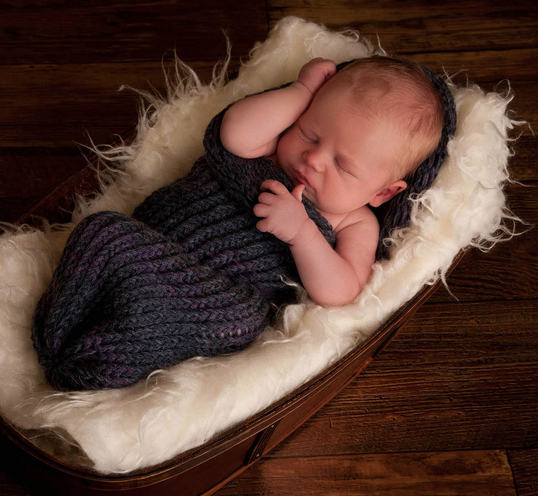
Babies are very sensitive to touch. At birth, they are most sensitive in their hands and mouth. Make sure your baby gets lots of touching throughout the day! Touch can be either alerting or calming to them. Use soft, smooth, and furry textures to sooth your baby in a swaddle. At birth, they will can distinguish temperatures and feel plan.
BALANCE/EQUILIBRIUM
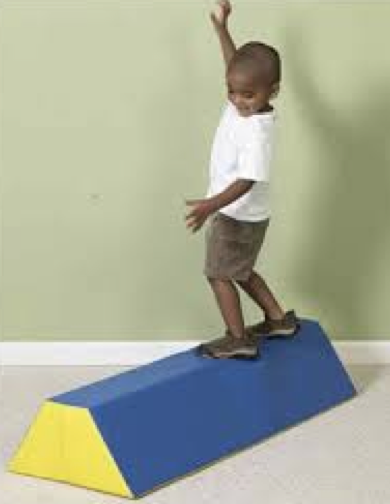
Newborns are completely dependent on you for their external support. During feeding, babies are mostly held in a reclining position with support to their head and upper body at 45degrees. Head and neck control will improve around 3 months leading to a more upright position for feeding. By 9 months, children will begin to crawl, roll, and sit upright with little external support while feeding. Your 12month old will begin finding their independence in mobility and feeding; including, crawling on household items, taking their first steps, grasping food, and reaching for feeding utensils. By 19 months, toddlers are running, walking, and no longer need external support in a high chair. Their balance is now developed enough for them to sit independently at the table with the family using a booster seat or child’s tall chair.
VISION
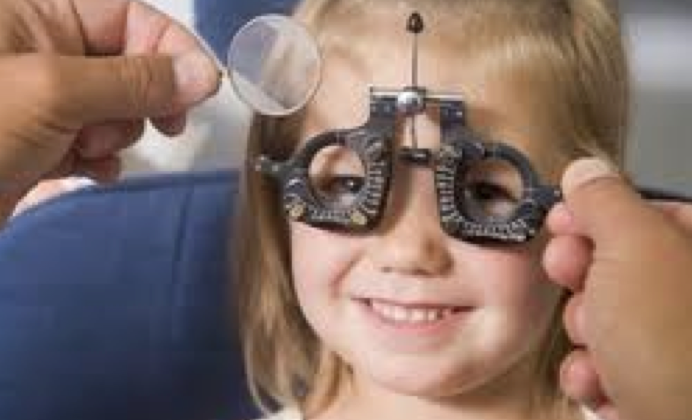
Infants will develop their visual skills over a period of time. A newborn’s vision is primarily near sighted and they can only focus on objects around 810 inches from their face. This enables them to detect the face of their parents. During this time period, and infants eyes are sensitive to light. As they eyes are not fully coordinated during the first two months, they may appear to wander or be crossed. This is typically normal unless the eye appears to do this in a consistent fashion. If this occurs an evaluation is warranted. between five to eight months the baby is begins to see in color, and develops depth perception. It is at this time the world becomes three dimensional. Between 9 months to a year the baby will be able to grasp with precision, and can judge distances fairly well. They are able recognize their own images in the mirror and familiar objects. Keep in mind vision development is not always typical and should be checked by a doctor or pediatrician assesses vision further.
SIGNS OF SENSORY DEFICIT/DELAY
Birth – 3 months the inability to control or maintain posture especially when laying on stomach. Arms and legs may have limited mobility or may appear stiff. 6-12 months the child may appear stronger on one side of the body. They may have difficulty crawling or putting food to the mouth. By 18- 24 months signs of deficit may include irritability, inadequate walking pattern (walks on toes). They may be hypersensitive to sounds, textures or movement.
36 months a baby may have difficulty rolling over and back. Their limbs & trunk may be excessively loose and the baby is unable to sit without support.
Additional Resources
- http://www.abilitypath.org/areasofdevelopment/physica ldevelopment/sensory/articles/howyourchildssensory systemdevelops.html
- PBS parents http://www.pbs.org/parents/childdevelopment/sensory play/Zero to Threehttp://www.zerotothree.org/childdevelopment/temperam entbehavior/babiesandtheirsenses.html
References
- Honig PhD, A. S. (2014). Infants & Toddlers: How Children Develop Sensory Awareness. Retrieved June 25, 2014, from http://www.scholastic.com/teachers/article/infantstoddlershowchildr endevelopsensoryawareness
- Christianson OTR/L, C. (2010). How Your Child’s Sensory System Develops. . Retrieved June 25, 2014, from http://www.abilitypath.org/areasofdevelopment/physicaldevelopme nt/sensory/articles/howyourchildssensorysystemdevelops.html
- Morris, S. E., & Klein, M. D. (2000). Prefeeding skills: a comprehensive resource for mealtime development (2nd ed.). United States: TSB/Harcourt.
- Better Hearing Institute (2005) A Guide To Your Childs Hearing http://www.saslpa.ca/Guide_to_Your_Childs_Hearing.pdf




